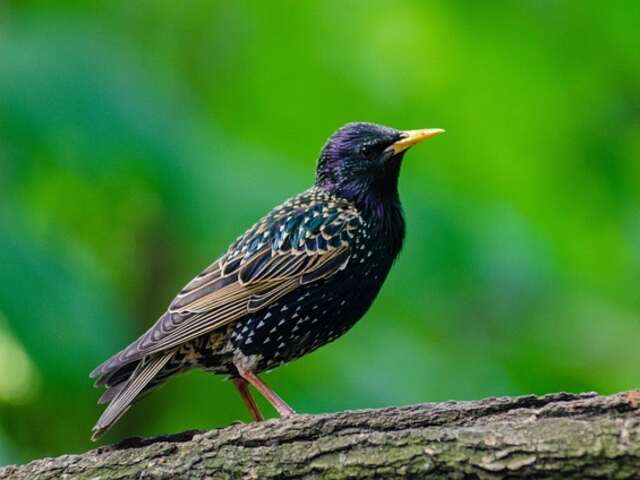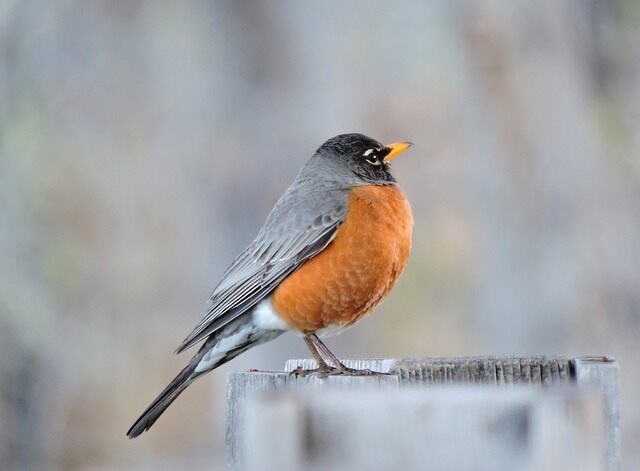Pergolas are a beautiful addition to any outdoor space, providing a shaded and tranquil area to relax and entertain. However, they can also be a popular spot for birds to nest and perch, causing damage to the structure and creating unsanitary conditions.
In this article, we will explore effective methods on how to keep birds off pergolas to maintain their aesthetic appeal and longevity.
Bird infestation on pergolas can occur for various reasons, such as the presence of food, water, or shelter. Birds may also be attracted to the structure’s height and open design, providing an ideal nesting ground.
While it may seem harmless at first, bird infestation can cause significant damage to the pergola, including staining, corrosion, and deterioration of wood, metal, and fabric materials.
Furthermore, bird droppings can pose health hazards to humans and pets, harboring harmful bacteria and viruses.
Therefore, it is crucial to take preventive measures to keep birds away from your pergola and maintain its structural integrity.
Table of Contents
- 1 Overview
- 2 Common Bird Species Found Near Pergolas
- 3 Reasons for Infestation
- 4 Risks and Damage
- 5 Physical Barriers
- 6 Visual Deterrents
- 7 Audio Deterrents
- 8 Natural Remedies for Bird Control on Pergolas
- 9 Frequently Asked Questions
- 9.1 Are there any specific types of birds that are more likely to infest a pergola?
- 9.2 How often do physical barriers, such as netting or spikes, need to be replaced or repaired?
- 9.3 Can visual deterrents, like reflective surfaces or scarecrows, be effective in deterring birds year-round or only during certain seasons?
- 9.4 Are there any natural remedies for bird control that are safe for pets or children?
- 9.5 Is it necessary to use multiple methods of bird control on a single pergola, or is one method typically enough?
- 10 Conclusion
- 11 Author
Overview
The problem of avian infestation on outdoor structures, particularly those made of wood or metal and designed for shade or decoration, has prompted the development of various methods aimed at deterring feathered pests.
These methods include physical barriers such as netting, spikes, mesh, and visual deterrents such as scarecrows, decoys, reflective surfaces, and audio deterrents such as ultrasonic devices and predator calls.
Natural remedies like bird repellent, essential oils, and homemade sprays are also used to keep birds off pergolas.
Understanding bird behavior and the benefits of prevention are crucial in selecting the right method for bird control.
Additionally, it is important to consider the environmental impact of these methods before implementing them.
In the subsequent section about reasons for infestation, we will explore the common factors that attract birds to pergolas and how to address them.
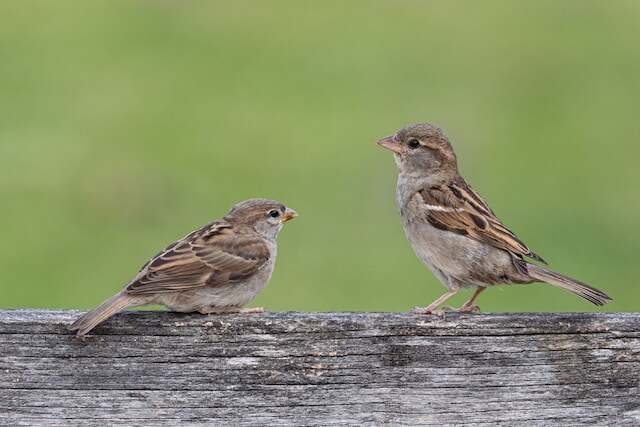
Common Bird Species Found Near Pergolas
Several bird species may be found near pergolas, attracted by the structure’s open design and potential food sources. Some common birds that may frequent pergolas include:
- House Sparrow: Sparrows are small, social birds are known for nesting in and around human-made structures, including pergolas.
- American Robin: Robins are often seen hopping and foraging for insects on lawns and gardens near pergolas.
- Mourning Dove: These gentle, cooing birds may perch on pergolas and nearby trees, seeking shelter and nesting spots.
- Northern Cardinal: With their vibrant red plumage, male cardinals may be spotted perching on pergolas while singing their melodic songs.
- Black-capped Chickadee: These energetic birds are common visitors to pergolas, often foraging for insects or seeds.
- American Goldfinch: Goldfinches are attracted to the seeds of various plants, and if there are flowering plants nearby, they may frequent pergolas in search of food.
It’s important to note that bird species can vary depending on geographical location and habitat, so the specific birds seen near pergolas may differ in different regions.
Reasons for Infestation
Understanding the factors that attract birds to perch on pergolas can help develop effective strategies to prevent infestation and minimize potential damage.
Bird behavior and nesting habits are significant contributors to the prevalence of birds on pergolas.
Birds often seek shelter and nesting sites in areas with a favorable environment, such as pergolas, which provide shade, shelter, and a place to build nests.
Environmental factors, such as weather conditions, can also attract birds to pergolas. For instance, during the hot summer months, pergolas offer a cool and shaded spot for birds to rest.
However, the presence of birds on pergolas can negatively impact the aesthetics of the structure and lower the property value.
This is because bird droppings can leave unsightly stains, corrode the surface of the pergola, and create an unpleasant odor.
The next section will discuss the risks and damage caused by bird infestation on pergolas.
Risks and Damage
Bird infestation on pergolas can lead to structural damage, health hazards, and decrease the overall aesthetic appeal of the structure.
Assessing the damage caused by bird infestation on pergolas may vary depending on the type of bird and the extent of their activity.
Bird droppings can damage paint, corrode metal, and weaken wooden structures over time.
The accumulation of bird droppings and nesting materials can also pose health risks to people, as they can harbor bacteria and fungi that can cause respiratory problems.
Long-term effects of bird infestation on pergolas can also include the accumulation of bird mites, which can invade homes and cause itching and rashes in humans.
Overall, the risks and damage caused by bird infestation on pergolas should not be underestimated, and appropriate measures should be taken to prevent these consequences.
Physical Barriers
Netting is a popular physical barrier used to prevent birds from accessing pergolas. It is a mesh material that is installed over the pergola, preventing birds from landing or nesting.
Spikes are another physical barrier that can be used to keep birds off pergolas. They are installed on flat surfaces and prevent birds from landing, without causing any harm to them.
Mesh is a third physical barrier used to keep birds off pergolas. It is a tightly woven material that is installed over the pergola, creating a physical barrier to prevent birds from accessing the area.
Netting
Mesh is a common physical barrier used to deter avian infestation on outdoor structures. Bird netting installation is a popular method to keep birds off pergolas.
The benefits of using netting include its ability to protect against multiple bird species, its cost-effectiveness, and its durability.
Additionally, bird netting is a humane method, as it does not harm the birds. However, proper maintenance of bird netting is crucial to ensure its effectiveness.
This includes regular inspections for any tears or holes, cleaning to prevent buildup of debris or droppings, and replacing any damaged sections promptly.
Utilizing bird netting as a physical barrier is an effective way to prevent avian infestation on pergolas. The next step is exploring the use of spikes and mesh as additional methods for bird control.
Spikes and Mesh
In the ongoing efforts to prevent avian infestation on outdoor structures, bird spikes and mesh have emerged as two additional methods for controlling the presence of feathered creatures.
Bird spikes are commonly used to prevent birds from landing on specific areas of a structure by creating an uncomfortable surface for them to perch on.
These spikes are made of stainless steel and can be installed on ledges, beams, and other flat spaces where birds often land.
Mesh, on the other hand, is a physical barrier that can be used to cover large areas such as pergolas. It prevents birds from landing and nesting on the structure by blocking access to the area.
Mesh benefits include its durability, flexibility, and ease of installation.
When installing spikes or mesh, it is important to ensure that they are properly secured and placed in areas where birds are likely to land.
Additionally, regular maintenance is necessary to ensure that the spikes or mesh remain effective.
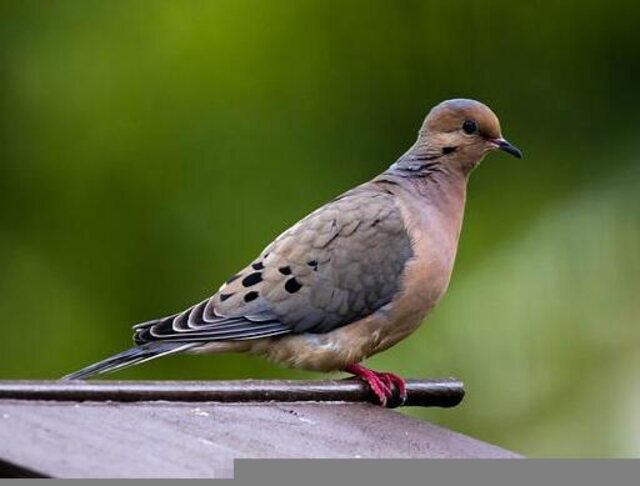
Visual Deterrents
Visual deterrents can be effective in keeping birds off pergolas.
Scarecrows and decoys are commonly used visual deterrents that create the illusion of a predator, which can scare birds away.
Reflective surfaces, such as mirrors or shiny objects, create an unsettling environment for birds and can deter them from landing on the pergola.
Scarecrows and Decoys
Scarecrows and decoys are popular non-physical barrier methods used to deter avian pests from nesting and roosting on outdoor structures such as pergolas.
Bird decoys are typically meant to resemble natural predators like owls or hawks, and are often made of plastic or other lightweight materials.
Scarecrows, on the other hand, are usually human-like figures made from straw or other materials.
While these methods may be effective for a short period of time, birds are quick to realize that they pose no real threat and will often return to the area.
As a result, many people opt for alternative visual deterrents like reflective surfaces or shiny objects, which have been shown to be more effective in deterring birds from roosting and nesting on outdoor structures.
Reflective Surfaces
Reflective surfaces have been found to be a more effective method for deterring avian pests from nesting and roosting on outdoor structures, as they leverage the natural aversion of birds towards light and movement.
Design ideas for reflective surfaces include using mirrors, CDs, or metallic objects that reflect light in different directions.
Installation tips include placing the reflective surfaces in areas where birds gather most frequently, such as near nesting sites or feeding areas.
Evaluating the effectiveness of reflective surfaces can be done by observing the reduction of birds in the targeted areas over time.
However, it is important to note that reflective surfaces may not work for all bird species and may require frequent maintenance to ensure their reflective properties remain effective.
The use of reflective surfaces can be combined with other bird control methods for a comprehensive approach to keeping birds off pergolas.
Transitioning into the subsequent section about ‘audio deterrents,’ it is important to note that these methods can also be effective when used in conjunction with reflective surfaces.
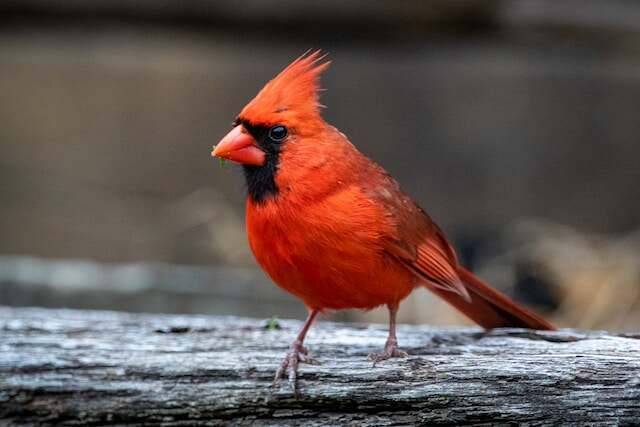
Audio Deterrents
Ultrasonic devices emit high-frequency sound waves that are unpleasant to birds, making them uncomfortable and eventually deterring them from settling on pergolas.
These devices are harmless to birds but effective in keeping them away from the area.
On the other hand, predator calls play on a bird’s natural instinct to avoid predators and can be a useful tool in deterring them from pergolas.
Ultrasonic Devices
One effective method for deterring avian infestations on outdoor structures involves utilizing devices that emit high-pitched sound waves that are inaudible to humans but irritating to birds.
Ultrasonic devices are one such option that can be used to keep birds off pergolas. These devices work by emitting a high-frequency sound that disturbs birds and causes them to move away from the area.
The pros of using ultrasonic devices include their effectiveness in deterring birds without harming them, their ease of use, and their capability to cover larger areas.
However, the cons include their limited effectiveness in open and windy areas and their potential to annoy nearby humans and pets.
Some of the best brands of ultrasonic devices for bird control on pergolas include Bird-X, Hoont, and Balcony Guard.
While ultrasonic devices can be an effective bird control method, it is important to note that they are not the only solution.
In the subsequent section about ‘predator calls,’ we will explore another option for keeping birds off pergolas.
Predator Calls
Using predator calls is another method that can be used to keep birds off pergolas. Different types of predator calls such as those of falcons, hawks, and owls can be played to deter birds from perching on pergolas.
These predator calls can be found in electronic devices that are easy to use.
However, the effectiveness of predator calls may vary depending on the type of bird and the frequency of use. It is recommended to rotate the predator calls to avoid birds from getting used to them.
While predator calls may be effective in deterring birds from pergolas, it is important to note that they may also disturb the surrounding wildlife. As such, it is important to use them responsibly and with caution.
Moving on to the next section, natural remedies for bird control on pergolas can also be explored.
Natural Remedies for Bird Control on Pergolas
Bird repellent, essential oils, and homemade sprays are some of the natural remedies for bird control on pergolas.
Bird repellent sprays contain ingredients that birds find unpleasant or irritating, such as capsaicin or methyl anthranilate.
Essential oils like peppermint, eucalyptus, and citronella can also be used as a natural bird repellent, either by diffusing them or mixing them with water and spraying them on the pergola.
Homemade sprays can be made using common household items such as vinegar, garlic, and chili powder, and can be effective in deterring birds from perching on pergolas.
Bird Repellent
The application of bird repellent on pergolas has been advocated as an effective means of deterring avian infestation, potentially providing a significant reduction in the number of feathered inhabitants in the area.
There are various types of repellents available in the market, including chemical and non-chemical options.
Chemical repellents typically contain methyl anthranilate, a grape extract that causes birds to feel nauseous, leading them to associate the area with negative experiences and avoid it.
On the other hand, non-chemical options include bird gels, sprays, and granules, which create a physical barrier to birds or emit an unpleasant odor.
The effectiveness of repellents depends on the type of bird species, the severity of the infestation, and the environmental conditions.
Therefore, choosing the right repellent requires consideration of the type of bird infestation, the area to be treated, and the potential risks of the repellent to other animals or humans.
In the next section, we will discuss the potential use of essential oils as a natural remedy for bird control on pergolas.
Essential Oils
The use of essential oils as a potential natural remedy for avian infestation on outdoor structures has gained attention in recent years, as many people seek alternative methods to traditional bird control techniques.
Essential oils are concentrated plant extracts that can be diffused to create a fragrant aroma that repels birds.
Some popular essential oils used for bird control on pergolas include peppermint, eucalyptus, lavender, and lemon.
These oils can be diffused using various diffusing techniques, such as nebulizing, ultrasonic, or heat diffusers. Additionally, blends specifically designed for pergolas are available in the market.
However, it is important to note that essential oils can be potent and may pose safety concerns if not used properly.
They should be diluted and used in small amounts to avoid adverse reactions in birds or humans.
Furthermore, essential oils may not be effective against all bird species and may require regular reapplication.
As such, essential oils should be considered as a supplementary method of bird control rather than a standalone solution.
The next section will discuss homemade sprays as another natural remedy for bird control on pergolas.
Homemade Sprays
Homemade sprays are an alternative natural remedy for avian infestation on outdoor structures that can be easily made using household ingredients and have the potential to be effective against certain bird species.
DIY recipes for homemade sprays vary, but common ingredients include chili peppers, garlic, vinegar, and water.
These sprays work by making the surfaces of pergolas unappealing to birds due to the strong scent or taste.
While some bird species may be deterred by these homemade sprays, their effectiveness may vary depending on the type of bird and the severity of the infestation.
It is important to note that safety precautions should be taken when using homemade sprays, as some ingredients may be harmful if ingested or come into contact with skin.
It is also recommended to test the spray on a small area first to ensure it does not damage the pergola’s material.
Overall, homemade sprays can be a cost-effective and natural way to deter birds from pergolas, but their effectiveness should be compared to other prevention methods before choosing a solution.
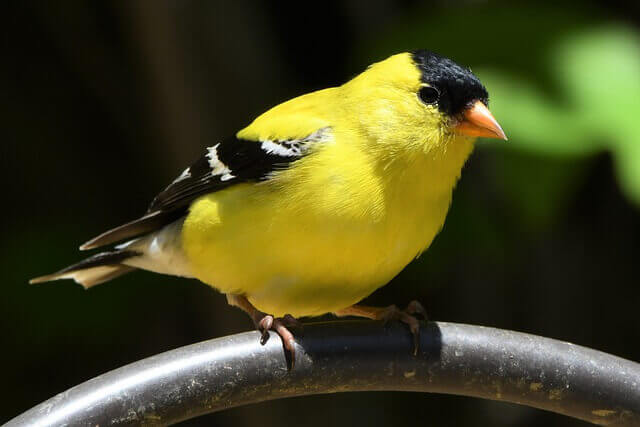
Frequently Asked Questions
Are there any specific types of birds that are more likely to infest a pergola?
Like a flock of sheep grazing in a field, common pergola bird species like pigeons, sparrows, and starlings infest these outdoor structures in search of shelter, warmth, and food.
These birds exhibit behavior patterns such as nesting, defecating, and vocalizing that can lead to unsightly messes and potential health risks for humans.
Pigeons, for example, carry diseases like salmonella and histoplasmosis, while their droppings can corrode building materials and spread fungal spores.
Understanding the specific bird species that are likely to infest a pergola can help homeowners implement prevention methods that are tailored to their needs.
How often do physical barriers, such as netting or spikes, need to be replaced or repaired?
Physical barriers, such as netting or spikes, are commonly used to prevent birds from infesting pergolas.
While these solutions are effective in the short term, they may require regular maintenance and replacement to ensure long term effectiveness.
The cost of maintenance and replacement may vary depending on the type of material used and the extent of damage caused by the birds.
Therefore, it is important to consider cost effective solutions that not only prevent bird infestation but also have low maintenance requirements.
Regular inspection and repair of the barriers can also help to extend their lifespan and reduce the need for frequent replacements.
Can visual deterrents, like reflective surfaces or scarecrows, be effective in deterring birds year-round or only during certain seasons?
Visual deterrents such as reflective surfaces and scarecrows can be effective in deterring birds year-round, but their effectiveness may vary depending on the species of bird and the severity of the infestation.
Decoy predators, such as plastic owls or hawks, can also be effective in deterring birds from perching on pergolas. However, they must be moved frequently to prevent birds from becoming accustomed to their presence.
Bird repellent sprays and essential oils can also be effective in deterring birds, but may need to be reapplied regularly.
Sound machines that emit predator calls or other bird distress signals can also be effective in deterring birds, but may require frequent battery replacements or maintenance.
Overall, a combination of these methods may be necessary for effective bird control on pergolas.
Are there any natural remedies for bird control that are safe for pets or children?
Natural remedies for bird control that are safe for pets or children are available and can be effective in deterring birds. However, their effectiveness may vary depending on the type of bird infestation and the severity of the problem.
Natural remedies such as bird repellents, essential oils, and homemade sprays have been used to repel birds without causing harm to pets or children.
Bird repellents are made of non-toxic ingredients that emit a scent that birds find unpleasant and can be applied to different surfaces.
Essential oils such as peppermint, clove, and lemon can also be used as a natural bird repellent. Homemade sprays made of water and vinegar or chili peppers can also be effective in deterring birds.
While these natural remedies are generally safe for pets and children, it is still important to exercise caution and follow instructions carefully.
Is it necessary to use multiple methods of bird control on a single pergola, or is one method typically enough?
Combining multiple methods for bird control on a single pergola is often necessary for effective results.
According to a study conducted by the University of Illinois, using a single method for bird control resulted in only a 30% reduction in bird populations.
However, combining physical barriers with visual and audio deterrents resulted in a 90% reduction in bird populations.
While combining methods may be more costly, it is often more cost-effective in the long run as it reduces the need for frequent maintenance and replacement of damaged structures.
Additionally, using multiple methods can have a lower environmental impact as it reduces the need for harmful chemicals and pesticides.
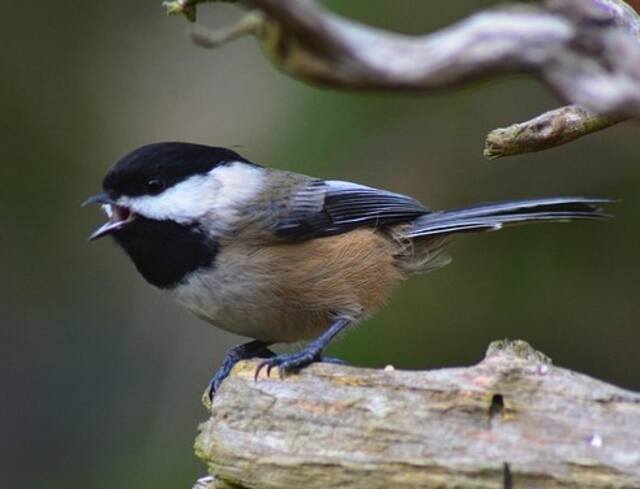
Conclusion
In conclusion, having a bird infestation on your pergola can cause significant damage and unsanitary conditions.
Birds can create nests and droppings that can damage the structure of your pergola and pose health risks. Therefore, it is crucial to take preventive measures to keep birds off your pergola.
There are several effective methods to keep your pergola bird-free, such as using physical barriers like netting or spikes, visual deterrents like scarecrows or reflective tape, audio deterrents like ultrasonic devices, and natural remedies like essential oils or herbs.
By implementing these methods, you can protect your pergola from bird infestation and enjoy a clean and safe outdoor space.
In conclusion, prevention is the key to keeping birds off your pergola.
With the right preventive measures, you can ensure that your pergola remains a beautiful and functional addition to your outdoor space without any bird-related issues.

